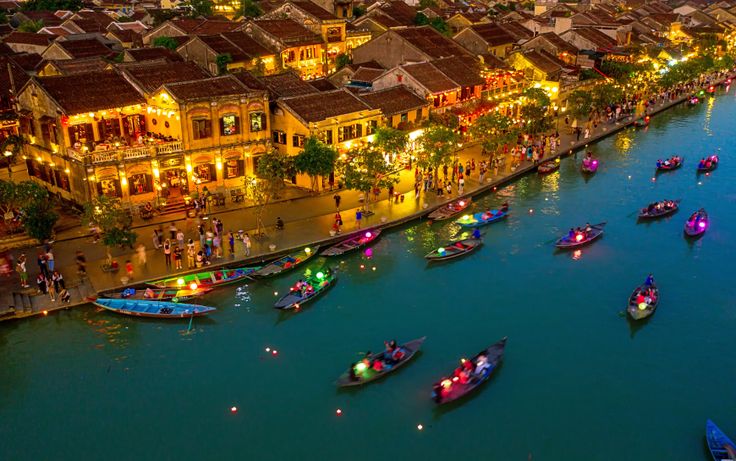Da Nang Typhoon Season 2026: Complete Guide with 12 Essential Safety Tips
Planning a trip to Vietnam’s coastal gem? This comprehensive guide covers everything you need to know about navigating Da Nang’s typhoon season in 2026—from weather patterns to practical safety measures that ensure your vacation remains memorable for all the right reasons.
Understanding Da Nang’s Typhoon Season: Essential Overview for 2025-2026
Central Vietnam’s most beloved beach destination faces an annual challenge that every traveler should understand before booking their flight. Da Nang’s typhoon season represents a significant weather phenomenon that shapes the local climate, affects tourism patterns, and requires special preparation for visitors planning their Vietnamese adventure.
Typhoons (known locally as “bão”) are powerful tropical cyclones that develop over the warm waters of the western Pacific Ocean before potentially making landfall along Vietnam’s central coast. These weather systems bring intense rainfall, strong winds, and occasionally cause flooding in low-lying areas.
For 2025, meteorologists at Vietnam’s National Center for Hydro-Meteorological Forecasting predict slightly higher typhoon activity than the historical average, with potential impacts extending beyond the traditional peak months. This forecast makes understanding the seasonal patterns more crucial than ever for travelers.
“Da Nang typically experiences 1-3 direct typhoon impacts annually, but indirect effects from nearby storms can influence weather patterns for days at a time,” explains Dr. Nguyen Van Minh, senior meteorologist at Vietnam’s Weather Service. “The 2025 season shows signs of increased activity due to shifting Pacific temperature patterns.”

When Does Typhoon Season Occur in Da Nang? Month-by-Month Analysis for 2025-2026
Typhoon season in Da Nang doesn’t arrive suddenly—it follows a predictable annual pattern with varying intensity levels throughout different months. Understanding this progression helps travelers make informed decisions about when to visit.
Pre-Season Warning Signs (July-August )
July marks the transition from dry to wet season in Da Nang, with gradually increasing precipitation. By August, the early signs of typhoon season become apparent:
- Average rainfall in August 2025: 240-270mm (projected)
- Typical temperature range: 25-35°C
- Humidity levels: 75-85%
- Typhoon probability: 20-25% chance of at least one significant storm
- Expected rainy days: 15-18 days
During this period, brief afternoon downpours become common, but they rarely disrupt travel plans for more than a few hours. Most outdoor activities remain viable, though afternoon thunderstorms may require schedule adjustments.
Peak Typhoon Period (September-October )
September and October represent the heart of Da Nang’s typhoon season, when travelers should exercise maximum caution:
- Average rainfall in September 2025: 340-380mm (projected)
- Average rainfall in October 2025: 550-620mm (projected)
- Temperature range: 24-32°C
- Humidity levels: 80-90%
- Typhoon probability: 45-55% chance of direct or near-direct impacts
- Expected rainy days: 18-22 days
During these peak months, extended periods of heavy rainfall become common. The Bach Dang and Han River water levels often rise significantly, occasionally causing localized flooding in areas like Hai Chau District and parts of Son Tra Peninsula.
According to the Da Nang Department of Tourism’s 2025 preparedness report, October 8-22 represents the historical peak window when major typhoons are most likely to affect the region.
Late Season Transition (November-December)
By November, typhoon frequency begins to decrease, though significant storms remain possible:
- Average rainfall in November 2025: 350-420mm (projected)
- Temperature range: 22-28°C
- Humidity levels: 75-85%
- Typhoon probability: 15-20% chance of significant storm activity
- Expected rainy days: 14-18 days
December typically marks the end of typhoon concerns, though lingering rainfall continues:
- Average rainfall in December 2025: 150-200mm (projected)
- Temperature range: 19-26°C
- Typhoon probability: Below 5%
- Expected rainy days: 10-14 days
12 Essential Safety Tips for Travelers During Da Nang’s Typhoon Season
Traveling to Da Nang during typhoon season doesn’t necessarily mean disaster, but it does require extra preparation. These twelve critical safety measures can help ensure your trip remains enjoyable despite potential weather challenges.
1. Choose Accommodation Strategically
Select hotels in Da Nang’s city center rather than isolated beachfront properties during peak typhoon months. Premium properties like Hyatt Regency Da Nang and Hilton Da Nang maintain comprehensive storm protocols, including backup generators, water reserves, and dedicated safety personnel.
The Vinpearl Luxury Da Nang, located at 7 Truong Sa Street, is particularly well-prepared with its reinforced construction designed to withstand typhoon-force winds exceeding 150 km/h.
2. Monitor Reliable Weather Sources Daily
Stay informed through official weather channels:
- Vietnam’s National Center for Hydro-Meteorological Forecasting: Updates in English available at nchmf.gov.vn
- Global Storm Tracking: typhoon2000.ph provides satellite imagery and storm paths
- Local English News: tuoitrenews.vn offers weather alerts for Da Nang
- Da Nang Warning System: The city’s SMS alert system can be accessed by registering at the tourism office
“We recommend checking forecasts at least twice daily during September and October,” advises Tran Minh Hai, Da Nang Tourism Crisis Management Coordinator. “Typhoons can change direction quickly, sometimes giving as little as 36 hours’ notice before major impacts.”
3. Purchase Comprehensive Travel Insurance
Standard travel insurance often excludes typhoon-related disruptions unless specifically added. Look for policies that explicitly cover:
- Weather-related flight cancellations
- Accommodation changes necessitated by evacuation orders
- Medical evacuation if local healthcare becomes inaccessible
- Trip interruption coverage for activities canceled due to weather
Insurance providers like World Nomads and Safety Wing offer specific “extreme weather” riders for Vietnam travel during typhoon season, with coverage extending to transportation disruptions and emergency accommodation needs.
4. Build Weather Buffers Into Your Itinerary
When traveling during typhoon season, flexibility becomes your greatest asset:
- Add 1-2 extra days to your Da Nang stay to accommodate potential delays
- Book flights with airlines offering free weather-related changes (Vietnam Airlines and Bamboo Airways both implemented this policy for 2025)
- Arrange accommodations with flexible cancellation policies
- Plan alternative indoor activities for each day
“I always recommend the ‘3-2-1 approach’ to clients traveling during typhoon season,” explains Nguyen Van Tuan, senior tour guide at Da Nang Explorer. “That means three possible activities each day, two backup plans, and one guaranteed indoor option regardless of weather.”
5. Pack Essential Typhoon Season Gear
Your typhoon season packing list should include:
- Waterproof phone case and dry bags for electronics and documents
- Quick-dry clothing and at least two pairs of shoes
- Portable phone charger with minimum 20,000mAh capacity
- Waterproof backpack or bag covers
- Microfiber towels that dry quickly
- Personal medication supply for at least 7 days beyond your planned stay
- Waterproof jacket or poncho (local options are often insufficient for heavy typhoon rains)
6. Learn Basic Vietnamese Emergency Phrases
While many Da Nang residents speak some English, learning these key phrases can prove invaluable during weather emergencies:
- “Có bão không?” (Is there a typhoon coming?)
- “Đường nào an toàn?” (Which road is safe?)
- “Tôi cần giúp đỡ” (I need help)
- “Chỗ trú ẩn ở đâu?” (Where is the shelter?)
- “Có ngập lụt không?” (Is there flooding?)
7. Register With Your Embassy
Most nations maintain consular services in nearby Hue or Ho Chi Minh City. Register your travel plans with your country’s embassy or consulate before arriving in Da Nang. The U.S. Smart Traveler Enrollment Program (STEP) and similar services for other nationalities provide emergency updates and assistance during severe weather events.
8. Understand Da Nang’s Typhoon Warning System
Da Nang employs a four-level typhoon warning system that travelers should understand:
- Level 1 (Yellow): Enhanced monitoring, minimal disruption
- Level 2 (Orange): Potential for travel disruptions, outdoor attractions may close
- Level 3 (Red): Significant danger, evacuation of certain areas possible
- Level 4 (Purple): Extreme danger, mandatory evacuations, airport closure likely
These warnings are broadcast via local television, radio, hotel announcements, and increasingly through the “Da Nang Today” mobile app available for both iOS and Android.
9. Identify Safe Zones and Evacuation Routes
Familiarize yourself with Da Nang’s designated typhoon shelters and high-ground areas:
- Da Nang Sports Palace: Primary evacuation center in Hai Chau District
- Tien Son Sports Center: Secondary evacuation facility
- Da Nang Administrative Center: Reinforced structure serving as emergency shelter
- Higher elevation areas: Hai Van Pass area and western portions of the city
“Every Da Nang hotel should provide guests with evacuation maps and safety instructions,” notes Pham Thu Hang, Director of Da Nang Hospitality Association. “If your accommodation doesn’t offer this information proactively, request it immediately upon check-in.”
10. Prepare an Emergency Contact Plan
Before your trip, establish a communication protocol with family or friends at home:
- Designate specific check-in times
- Establish a primary and backup communication method
- Share your detailed itinerary with emergency contacts
- Download offline maps of Da Nang for navigation without internet
- Consider purchasing a Vietnamese SIM card for reliable local connectivity
11. Adapt Your Activities to Weather Conditions
Rather than fighting the elements, embrace alternative experiences during inclement weather:
- Cultural immersion: The Da Nang Museum of Cham Sculpture houses the world’s largest collection of Cham artifacts
- Culinary adventures: Join indoor cooking classes at Morning Glory Cooking School
- Wellness retreats: Many luxury spas offer typhoon season specials
- Café culture: Da Nang’s vibrant coffee scene thrives regardless of weather
“Some of Da Nang’s most authentic experiences happen during rainy season,” shares travel blogger Hannah Carter. “Local life continues despite the weather, offering unique insights you might miss during peak tourist season.”
12. Consider Nearby Alternatives When Necessary
When typhoon warnings reach Level 3 or above, consider temporarily relocating to areas less affected by the weather system:
- Hoi An: Often experiences less severe impacts than Da Nang during certain storm patterns
- Hue: The former imperial capital frequently serves as a refuge for travelers during coastal storms
- Inland excursions: Consider exploring the scenic wonders of Ninh Binh, which typically experiences milder weather during typhoon season
Historical Typhoon Impacts in Da Nang (2020-2024)
Understanding past typhoon events helps travelers gauge the potential severity of future storms. Recent significant typhoons affecting Da Nang include:
Typhoon Molave (October 2020)
- Wind speeds: 165 km/h
- Rainfall: 774mm over 48 hours
- Impact duration: 3 days of direct effects
- Major consequences: Airport closed for 36 hours, Han River Bridge damaged, Son Tra Peninsula access restricted for 5 days
- Tourism disruption: 15,000 travelers affected by cancellations
Typhoon Conson (September 2021)
- Wind speeds: 120 km/h
- Rainfall: 530mm over 36 hours
- Impact duration: 2 days of direct effects
- Major consequences: Localized flooding in Ngu Hanh Son District, power outages affecting 40% of the city
- Tourism disruption: Forced evacuation of beachfront properties
Typhoon Noru (September 2022)
- Wind speeds: 185 km/h
- Rainfall: 650mm over 48 hours
- Impact duration: 4 days of direct effects
- Major consequences: Significant infrastructure damage, extended power outages, My Khe Beach erosion
- Tourism disruption: Complete shutdown of tourism activities for 5 days
Typhoon Khanun (August 2023)
- Wind speeds: 130 km/h
- Rainfall: 420mm over 30 hours
- Impact duration: 2 days of direct effects
- Major consequences: Moderate flooding in low-lying areas, transportation disruptions
- Tourism disruption: 3-day delay in resuming normal operations
Typhoon Yagi (September 2024)
- Wind speeds: 150 km/h
- Rainfall: 580mm over 40 hours
- Impact duration: 3 days of direct effects
- Major consequences: Flash flooding, landslides in mountainous areas near Da Nang
- Tourism disruption: Evacuation of coastal resorts, closure of Ba Na Hills for 4 days
The Best Time to Visit Da Nang (Weather-Optimized Calendar)
While typhoon season presents challenges, Da Nang enjoys perfect weather during other months. Here’s a month-by-month assessment to help you plan your 2025 visit:
Premium Weather Months (February-May )
These months offer Da Nang’s most reliable weather conditions:
- February 2025: 23-28°C, 70mm average rainfall, 8-10 hours daily sunshine
- March 2025: 24-30°C, 40mm average rainfall, 9-11 hours daily sunshine
- April 2025: 26-32°C, 30mm average rainfall, 10-12 hours daily sunshine
- May 2025: 28-34°C, 65mm average rainfall, 9-11 hours daily sunshine
During this period, beach conditions reach perfection with calm seas, excellent visibility for snorkeling, and manageable humidity levels. Hotel rates remain lower than the June-August high season, making this the ideal balance of weather quality and value.
Acceptable Weather Months (June-July )
These months offer generally good conditions with occasional rainfall:
- June 2025: 29-35°C, 95mm average rainfall, 8-10 hours daily sunshine
- July 2025: 29-35°C, 120mm average rainfall, 7-9 hours daily sunshine
While humidity increases and afternoon showers become more common, most days remain suitable for outdoor activities. The increased rainfall typically arrives in short, predictable patterns that rarely disrupt full-day excursions.
Challenging Weather Months (August-December)
These months require flexible planning and weather awareness:
- August 2025: 28-34°C, 270mm average rainfall, 6-8 hours daily sunshine
- September 2025: 27-32°C, 380mm average rainfall, 5-7 hours daily sunshine
- October 2025: 25-30°C, 620mm average rainfall, 4-6 hours daily sunshine
- November 2025: 23-28°C, 420mm average rainfall, 5-7 hours daily sunshine
- December 2025: 21-26°C, 200mm average rainfall, 6-8 hours daily sunshine
October presents the highest risk for travel disruption, with November following closely behind. If your schedule only permits travel during these months, consider splitting your time between Da Nang and inland destinations less affected by coastal weather patterns.
Alternative Destinations During Da Nang’s Typhoon Season
When typhoon warnings threaten to disrupt your Da Nang plans, consider these alternative destinations that typically experience more favorable conditions during the same period:
Northern Vietnam Alternatives
The northern regions often remain unaffected by typhoons that impact central Vietnam:
- Halong Bay: This UNESCO World Heritage Site offers stunning limestone karst landscapes and luxury cruise experiences even during central Vietnam’s typhoon season
- Sapa: The terraced rice fields reach their golden harvest colors during September-October
- Hanoi: The capital city experiences its most pleasant temperatures during October-November
Southern Vietnam Alternatives
Southern Vietnam operates on a different weather pattern than central regions:
- Ho Chi Minh City: Experiences afternoon showers rather than prolonged typhoon conditions
- Phu Quoc Island: Often remains sunny when Da Nang faces storm conditions
- Mekong Delta: The floating markets and river life continue year-round
Central Highland Escapes
The elevated regions just inland from Da Nang often avoid the worst typhoon impacts:
- Dalat: Located at 1,500 meters elevation, this mountain retreat experiences mild temperatures and reduced rainfall compared to coastal areas
- Kontum: Indigenous culture and coffee plantations provide unique experiences away from coastal storms
- Bach Ma National Park: Though close to Da Nang, its elevated position offers different weather patterns
Must-Have Apps for Navigating Da Nang’s Typhoon Season
Technology provides powerful tools for staying safe during unpredictable weather. These essential mobile applications help travelers monitor conditions and make informed decisions:
Weather Monitoring Apps
- Windy.com: Provides detailed typhoon tracking with visual wind patterns
- AccuWeather: Offers hourly precipitation forecasts specific to Da Nang
- Rain Alarm: Provides real-time radar updates showing approaching rainfall
Communication and Safety Apps
- Zalo: Vietnam’s most popular messaging app, essential for local communications
- Google Translate: Includes Vietnamese offline translation capability
- Maps.me: Offers detailed offline maps of Da Nang’s evacuation routes
- What3words: Pinpoints exact locations using three-word codes, helpful during emergencies
Travel Management Apps
- TripIt: Centralizes all reservations and helps track weather-related changes
- AirHelp: Assists with compensation claims for weather-delayed flights
- Grab: Vietnam’s primary ride-sharing service, crucial when public transportation stops
Indoor Activities in Da Nang During Rainy Weather
When typhoon conditions force you indoors, these engaging activities ensure your Da Nang experience remains memorable:
Cultural Immersion Opportunities
- Da Nang Museum of Cham Sculpture: Houses over 300 sandstone carvings dating from the 7th to 15th centuries
- Fine Arts Museum: Showcases contemporary Vietnamese artists in a colonial-era building
- Vietnam Culinary Museum: Offers interactive cooking demonstrations of Central Vietnamese specialties
Culinary Adventures
- Banh Mi Cooking Class: Learn to craft Vietnam’s famous sandwich from scratch
- Mi Quang Masterclass: Master Da Nang’s signature noodle dish
- Coffee Appreciation Sessions: Understand Vietnam’s unique coffee culture through guided tastings
Entertainment Options
- Helio Center: Indoor entertainment complex featuring bowling, arcade games, and cinema
- Vincom Plaza: Shopping mall with entertainment facilities and dining options
- Asia Park Indoor Section: Features Vietnamese cultural performances regardless of weather
Wellness and Relaxation
- Nang Spa: Offers traditional Vietnamese massage and herbal treatments
- Fusion Maia: Provides all-inclusive spa services even for non-guests during typhoon season
- The Spa at Hyatt Regency: Features specialized “rainy day relaxation” packages
Frequently Asked Questions About Da Nang’s Typhoon Season
How accurate are typhoon forecasts for Da Nang ?
Modern meteorological techniques provide reliable 3-5 day forecasts for typhoon development and tracking. The Vietnam Meteorological and Hydrological Administration has upgraded its forecasting capabilities for 2025, with new Doppler radar systems providing more precise predictions. However, typhoon intensity and exact landfall locations remain challenging to predict beyond 48 hours.
Can I get a refund if my trip is affected by a typhoon?
Refund policies vary widely by provider. Major international hotels typically offer full refunds for weather-related cancellations when official typhoon warnings are issued. Airlines serving Da Nang International Airport generally permit free rebooking rather than refunds. Tour operators maintain varying policies—local operators often provide rain checks, while international companies may offer partial refunds.
Always review cancellation policies before booking and consider purchasing “Cancel For Any Reason” insurance for maximum flexibility.
Are food supplies affected during typhoons in Da Nang?
Da Nang maintains robust food security measures during typhoon season. Major supermarkets like Lotte Mart and Vinmart stockpile essential supplies before predicted storms. Restaurants typically remain operational even during moderate typhoons, though menu options may become limited after 2-3 days of disruption. Markets like Han Market and Con Market typically reopen within 24 hours after storm conditions subside.
How do typhoons affect water quality at Da Nang beaches?
Typhoons significantly impact water quality, with effects lasting 3-7 days after the storm passes. Heavy rainfall causes runoff that increases bacterial levels and reduces visibility. The Department of Natural Resources monitors water quality daily during typhoon season, posting advisories at major beach entrances. Swimming is typically prohibited for 48-72 hours following major storms.
Will ATMs and banking services remain available during typhoons?
Da Nang’s banking infrastructure is well-prepared for typhoon disruptions. Major banks maintain generator-powered ATMs in central locations, though outlying machines may become unavailable during power outages. The city’s financial district implements waterproofing measures during typhoon season, allowing core banking functions to continue. However, travelers should maintain a cash reserve of 2-3 million VND (approximately $80-120 USD) for emergency needs.
How do locals prepare for typhoon season?
Da Nang residents have developed sophisticated typhoon preparation routines refined over generations:
- Homes are reinforced with additional supports from June through November
- Food stockpiling begins 48-72 hours before predicted landfall
- Boat owners move vessels to designated sheltered moorings
- Community warning systems operate through neighborhood leaders
- Extended family networks activate support mechanisms for elderly and vulnerable residents
Visitors can learn much from observing these local preparations, which combine modern technology with traditional knowledge.
Conclusion: Embracing Da Nang Despite Seasonal Challenges
Da Nang’s typhoon season presents real considerations for travelers, but with proper preparation, it needn’t derail your Vietnamese adventure. The city’s vibrant culture, culinary excellence, and natural beauty remain accessible year-round with the right approach to weather challenges.
For travelers seeking the most worry-free experience, planning your visit during February-May 2025 offers the optimal balance of pleasant weather, reasonable prices, and reduced crowds. However, those who can embrace flexibility might discover unique aspects of Da Nang during the rainier months—from more authentic local interactions to special seasonal foods only available during this period.
Remember that typhoon patterns affect different regions of Vietnam differently. If your travel dates are fixed during typhoon season, consider combining Da Nang with destinations like Halong Bay in the north or the Central Highlands, creating an itinerary that can adapt to coastal weather challenges.
With thorough preparation, respect for local warnings, and a flexible mindset, Da Nang remains a rewarding destination throughout 2025—typhoon season included.
Need help planning a weather-optimized Vietnam itinerary? Explore our customized Vietnam travel packages that balance coastal experiences with inland adventures, ensuring your vacation remains memorable regardless of seasonal challenges.
Contact
- Hotline | WhatsApp: +84.978.358.422
- Phone | WhatsApp: +84.962.261.687
- Email: halongbayluxcruises@gmail.com
- vietnammarveltravel@gmail.com














